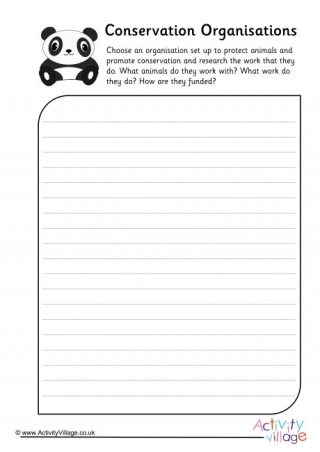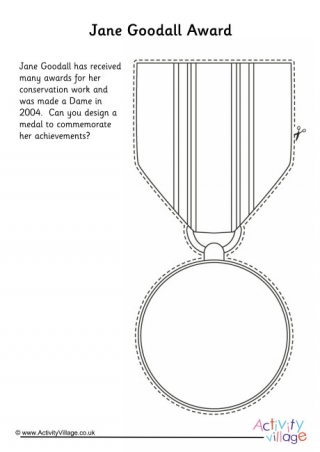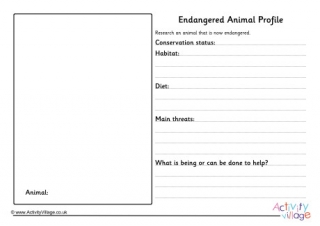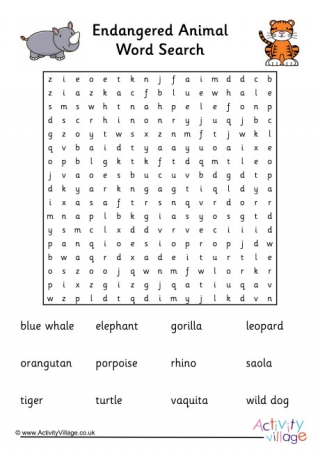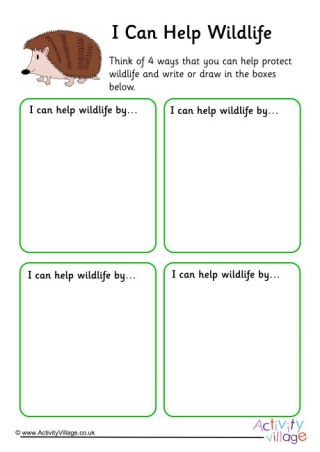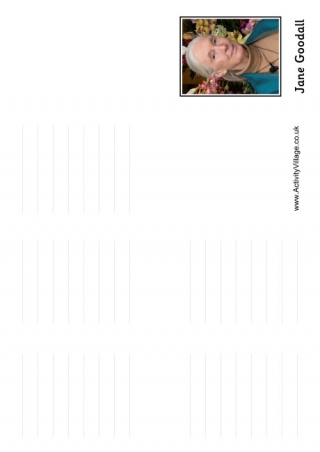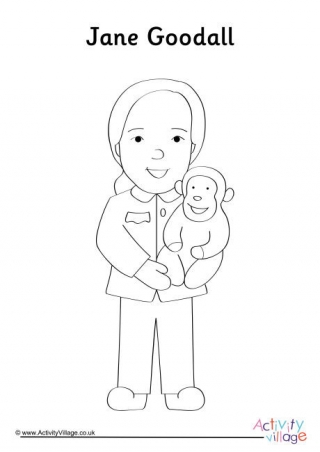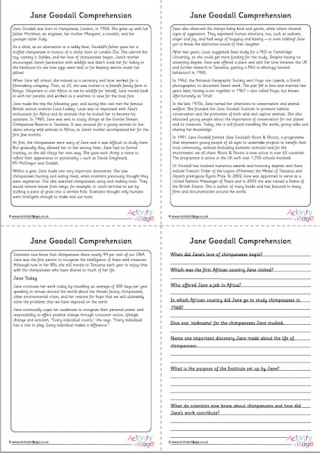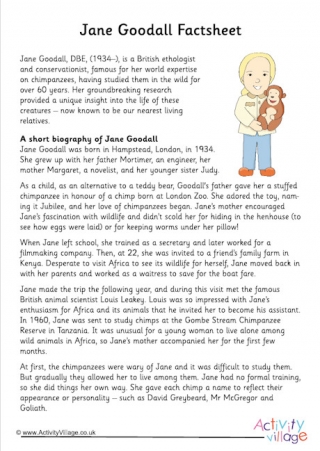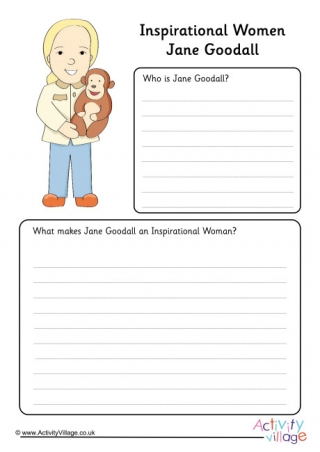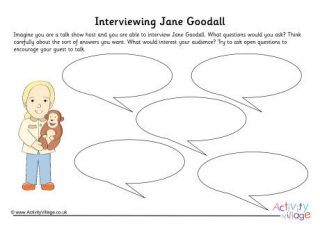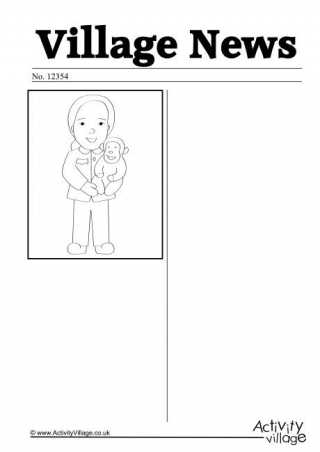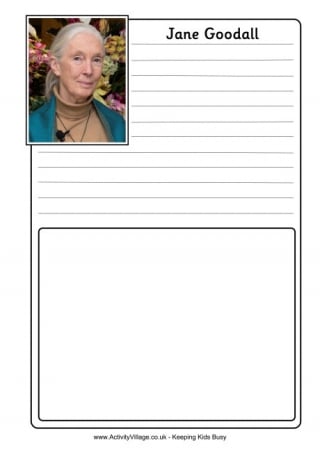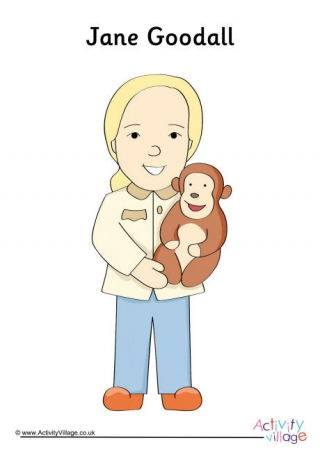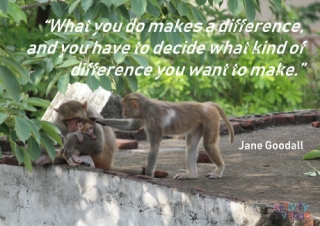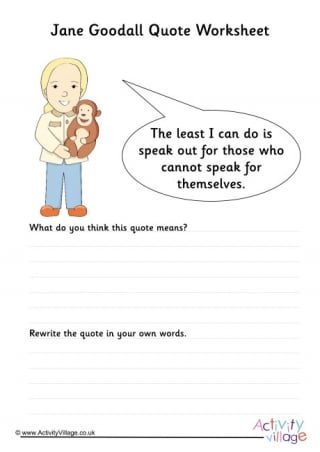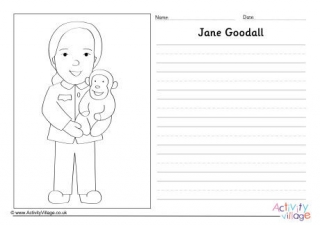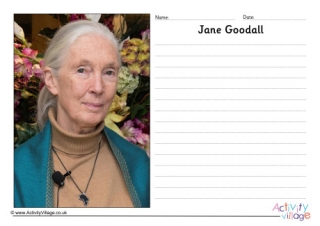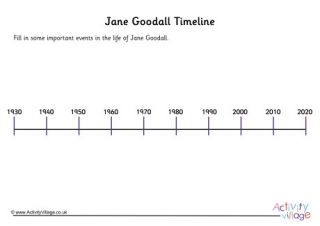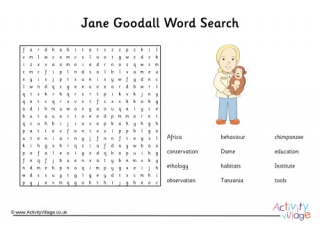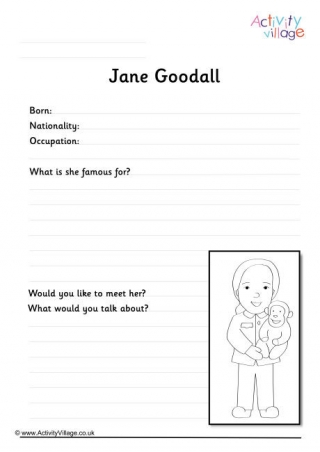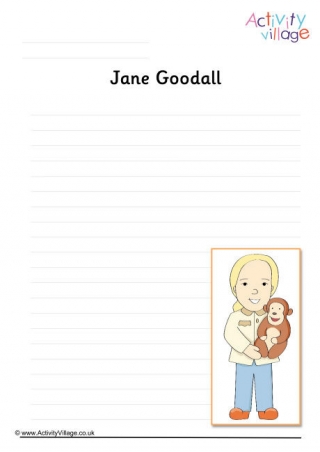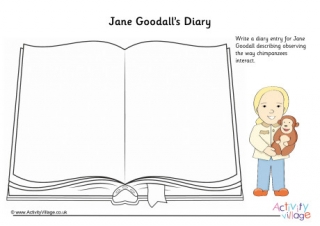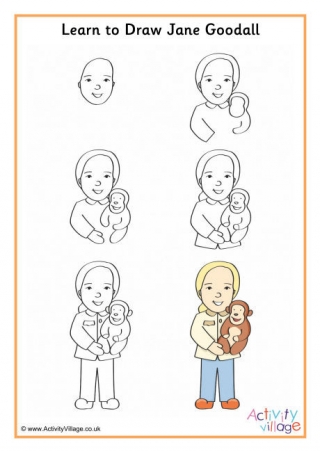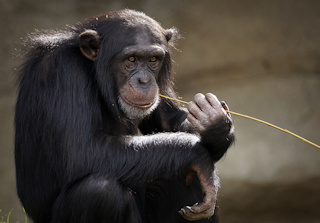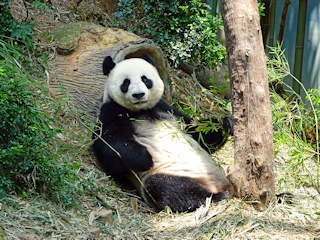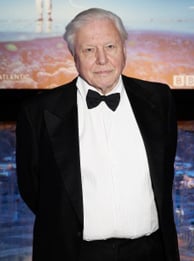Jane Goodall, DBE, (1934–), is a British ethologist and conservationist, famous for her world expertise on chimpanzees, having studied them in the wild for over 60 years. Her groundbreaking research provided a unique insight into the life of these creatures – now known to be our nearest living relatives. Find out about this remarkable woman who has dedicated her life to the study and protection of chimpanzees and use our printable resources below to test your knowledge.
3rd April is Jane Goodall's birthday, which means it is always a perfect excuse to learn about Jane and her lifetime's work with chimpanzees.
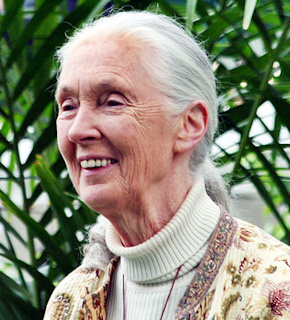
Fun Facts
- Jane and her younger sister Judy were born on the same day, but four years apart. Do you know anyone who has the same birthday as their sibling?
- Jane had lots of pets as a child, including dogs, cats, guinea pigs, caterpillars, snails and a hamster.
Jane Goodall Quotes
“I wanted to learn things that no one else knew, uncover secrets through patient observation. I wanted to come as close to talking to animals as I could.”
“The least I can do is speak out for those who cannot speak for themselves.”
“What you do makes a difference, and you have to decide what kind of difference you want to make.”
A Short Biography of Jane Goodall
Jane Goodall was born in Hampstead, London, in 1934. She grew up with her father Mortimer, an engineer, her mother Margaret, a novelist, and her younger sister Judy.
As a child, as an alternative to a teddy bear, Goodall's father gave her a stuffed chimpanzee in honour of a chimp born at London Zoo. She adored the toy, naming it Jubilee, and her love of chimpanzees began. Jane’s mother encouraged Jane’s fascination with wildlife and didn’t scold her for hiding in the henhouse (to see how eggs were laid) or for keeping worms under her pillow!
When Jane left school, she trained as a secretary and later worked for a filmmaking company. Then, at 22, she was invited to a friend’s family farm in Kenya. Desperate to visit Africa to see its wildlife for herself, Jane moved back in with her parents and worked as a waitress to save for the boat fare.
Jane made the trip the following year, and during this visit met the famous British animal scientist Louis Leakey. Louis was so impressed with Jane’s enthusiasm for Africa and its animals that he invited her to become his assistant. In 1960, Jane was sent to study chimps at the Gombe Stream Chimpanzee Reserve in Tanzania. It was unusual for a young woman to live alone among wild animals in Africa, so Jane’s mother accompanied her for the first few months.
At first, the chimpanzees were wary of Jane and it was difficult to study them. But gradually they allowed her to live among them. Jane had no formal training, so she did things her own way. She gave each chimp a name to reflect their appearance or personality – such as David Greybeard, Mr McGregor and Goliath.
Within a year, Jane made two very important discoveries. She saw chimpanzees hunting and eating meat, when scientists previously thought they were vegetarian. She also watched chimpanzees using and making tools. They would remove leaves from twigs, for example, or catch termites to eat by sticking a piece of grass into a termite hole. Scientists thought only humans were intelligent enough to make and use tools.
Jane also observed the chimps being kind and gentle, while others showed signs of aggression. They expressed human emotions, too, such as sadness, anger and joy, and had ways of hugging and kissing – or even tickling! Jane got to know the distinctive sound of their laughter.
After two years, Louis suggested Jane study for a PhD at Cambridge University, so she could get more funding for the study. Despite having no university degree, Jane was offered a place and split her time between the UK and further research in Tanzania, gaining a PhD in ethology (animal behaviour) in 1965.
In 1962, the National Geographic Society sent Hugo van Lawick, a Dutch photographer, to document Jane’s work. The pair fell in love and married two years later, having a son together in 1967 – also called Hugo, but known affectionately as ‘Grub’.
In the late 1970s, Jane turned her attentions to conservation and animal welfare. She founded the Jane Goodall Institute to promote habitat conservation and the protection of both wild and captive animals. She also educated young people about the importance of conservation for our planet and its creatures. Today, she is still found travelling the world, giving talks and sharing her knowledge.
In 1991 Jane Goodall formed Jane Goodall’s Roots & Shoots, a programme that empowers young people of all ages to undertake projects to benefit their local community, animals (including domestic animals) and for the environment we all share. Roots & Shoots is now active in over 65 countries. The programme is active in the UK with over 1,700 schools involved.
Dr Goodall has received numerous awards and honorary degrees and these include France's Order of the Legion d'Honneur, the Medal of Tanzania and Japan’s prestigious Kyoto Prize. In 2002 Jane was appointed to serve as a United Nations Messenger of Peace and in 2003 she was named a Dame of the British Empire. She is author of many books and has featured in many films and documentaries around the world.
Scientists now know that chimpanzees share nearly 99 per cent of our DNA. Jane was the first person to recognise the intelligence of these wild creatures. Although now in her 80s, she still travels to Tanzania each year to enjoy time with the chimpanzees who have shared so much of her life.
Jane Today
Jane continues her work today by travelling an average of 300 days per year speaking in venues around the world about the threats facing chimpanzees, other environmental crises, and her reasons for hope that we will ultimately solve the problems that we have imposed on the earth.
Jane continually urges her audiences to recognise their personal power and responsibility to effect positive change through consumer action, lifestyle change and activism: “Every individual counts,” she says. “Every individual has a role to play. Every individual makes a difference.”
Our Jane Goodall Resources


